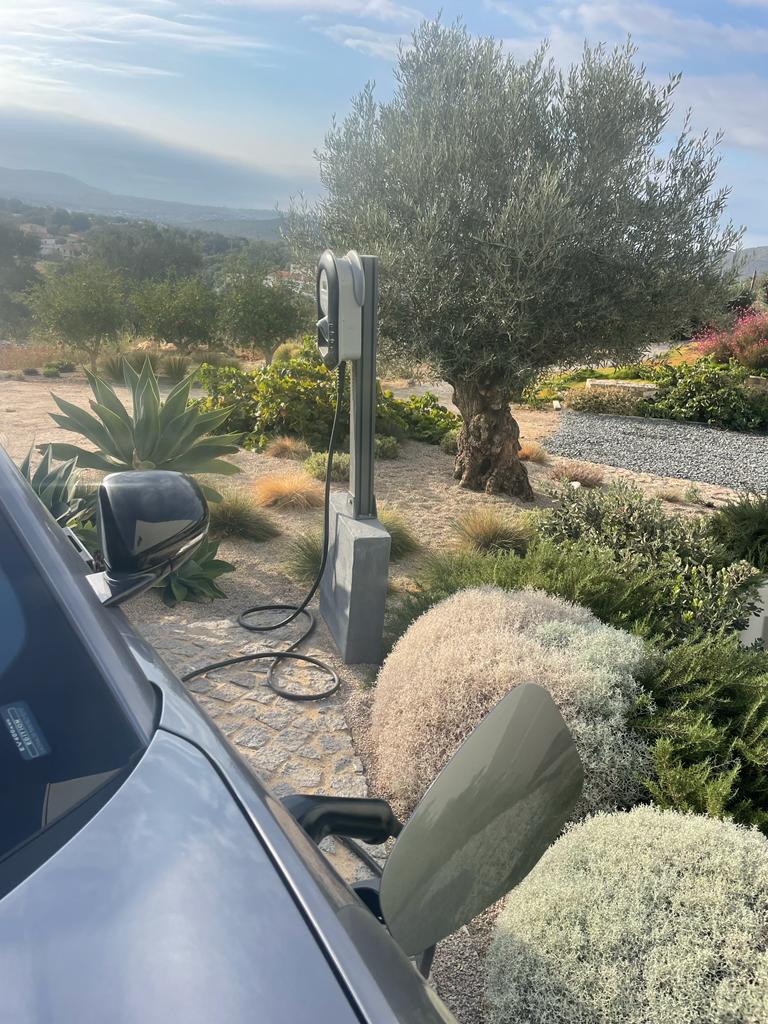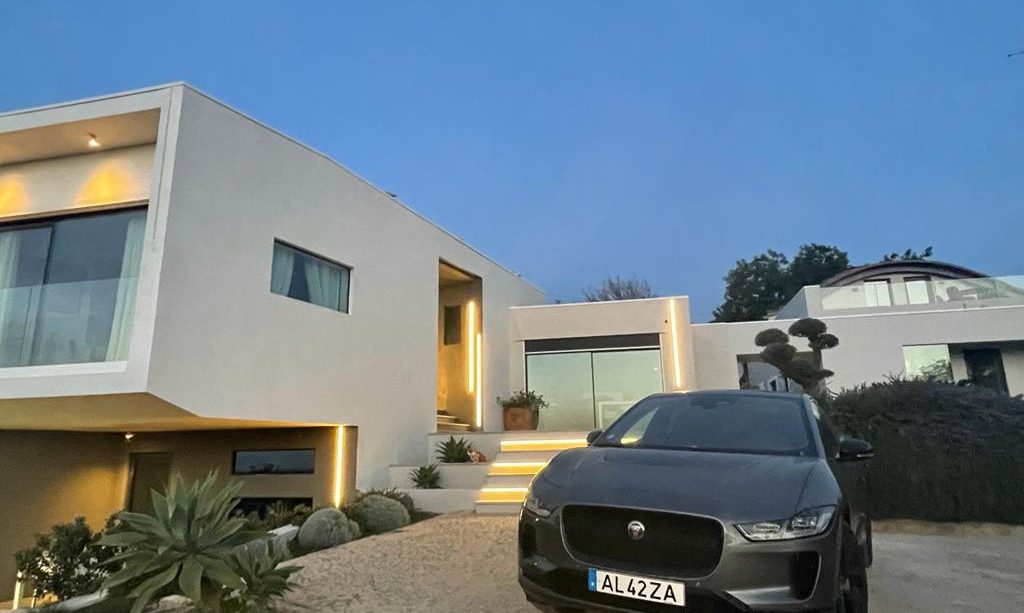Imagine you’re building a new home. (No, not necessarily from scratch, it could be a refurb / rebuild or remodel). It’s got to cater for your immediate needs, sure, but don’t you want it to meet a whole host of your future needs too?
And this includes adding a charging point for your future electric vehicle. Because while you may not have one just yet, the world’s going green, and we’ve all got our part to play!
Electric Vehicle charging stations are springing up all over the place
We’re talking shopping centres and hospitals, residential properties, and business parks. You must have seen them at Vilamoura Marina (Mar shopping etc , buts is worth mentioning local , if we consider that we are read by non locals ) and suddenly present at every motorway service station. So, if that’s the way the world is going, why not prepare for it from the offset?

Let’s talk about the convenience of an at-home EV charger
Because when you have your own electric vehicle, it’s simply a must. Sure, EVs are going further on a single charge than ever before, but you wouldn’t want to make the investment without the infrastructure to back it up.
Plus, an EV charging point increases value.
In terms of how much a home is worth, as it’s ready to take on the future. In terms of your lifestyle, as you park and charge overnight, ready to set off in the morning. In terms of hosting guests, who can pop round for a few hours and charge their car before heading home.

But let’s dive into the technicals
Firstly, what Is EV charging?
There’s actually not much to it. In fact, one of the draws of electric vehicles is that they can often be charged using a standard 120-volt plug, straight off your home grid. EV companies even supply a cable along with your car, so you’re good to go as long as you have a conveniently located plug.
That’s called Level 1 charging
(The 120V charging adapter, that is). This cable charges your car at a rate of about eight km of range per hour of charge. If you do the maths, this means you’ll likely be good to drive around 80 km on an overnight charge, which may just do the trick. Plus, not fully charging an EV’s lithium-ion battery every time you charge is actually good for it, long term, so keeping to this rhythm means protecting your car.
Then there’s Level 2 Home Charging
Can’t hang around all night waiting for your car to charge? Then you’ll need an L2 system, which uses 240V to give your car a range of between 20 and 95 km per hour. What a comparison!
As you can see, it’s simply a lot faster, getting your vehicle up to a 100% charge in next to no time… but, as you’d expect, a normal plug won’t do the trick. Basically, you’ll need a 240V outlet or to hardwire a charging station into your home electrical system – especially if the charger’s going to be outside.
It’s a great addition for peace of mind, ensuring you can get your car going in no time, even as you’re rushing around to meet your daily schedule.
And even Level 3 Charging Stations
Want to talk about the future of EV infrastructures? This is it, because a Level 3 charger can often take a car from 0 to fully charged in under an hour. Like everything, EV systems are developing at lightning speed, so it’s only natural that soon, it will take no longer to charge up a car than to fill it with petrol at a petrol station.
Now, how about that?
But we’re not quite there yet with installing level 3 stations at private residences (for many reasons, including electrical grid permissions, power, cost, and the necessary infrastructure), so this plan may just have to be put on hold for another few years.

And how about charging your car for free?
We’re talking an EV + photovoltaic panels, allowing you to harness the power of the Algarve sun to charge up your car, cutting out the need for the grid altogether (and the ever-rising bill that goes along with it). Now that’s what we call working with and within nature to prepare for the future!
Here at CORE, we’re all about preparing for the future, so we install EV charging points and photovoltaic panels as standard, which means your home and car are futureproofed and ready to run off sustainable power year-round! Now doesn’t that sound like the sustainable dream?


